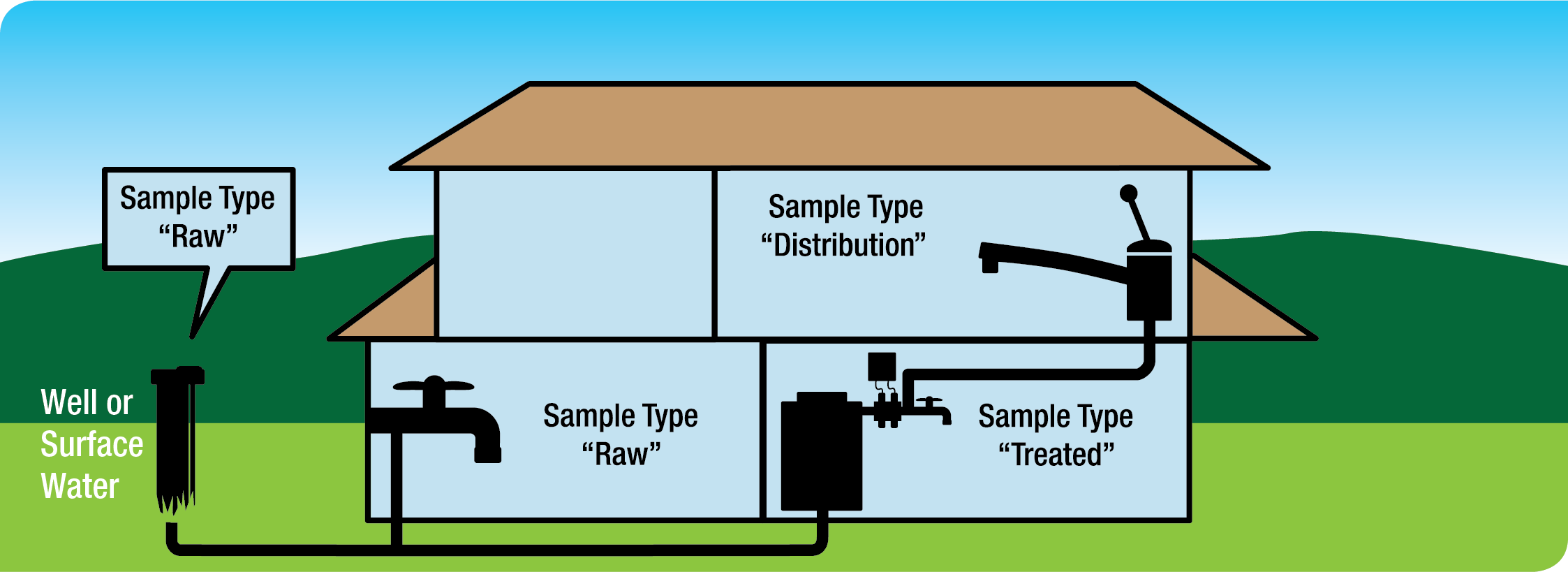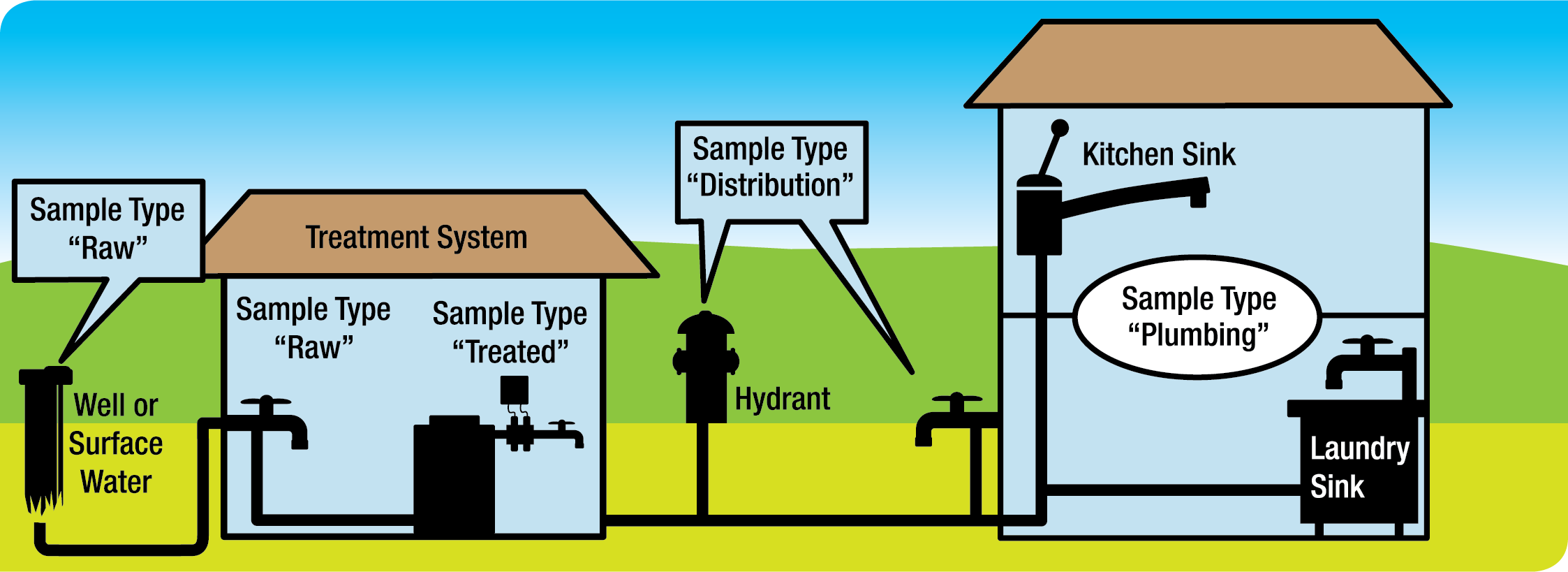Tips for completing drinking water chain of custody form
Tips for completing the chain of custody form for designated facilities and non-municipal year-round residential systems.
About the chain of custody form
You’re required by law (Ontario Regulation 170/03) to submit samples for testing.
The chain of custody (or sample submission) form is used to trace the path of a sample from the time it is collected to when it is accepted by the laboratory. You get this form from your licensed laboratory.
You must fill out the form completely and with the correct sample type for a testing parameter. The licensed laboratories that test samples and enter the results in the ministry’s Drinking Water Information System (DWIS) rely on you to properly fill out this form.
What happens when you fill out the form incorrectly
It will appear to the ministry that you have not taken the required samples and that you are out of compliance with Ontario law.
You may have to spend more time with ministry staff confirming that you have collected, and a designated laboratory has tested and submitted, the required drinking water test results.
What you can do
Follow the steps below to complete the chain of custody form for Non-Municipal Year-Round Residential Systems and Designated Facilities.
Step 1 – Identify sample location
You will be asked to provide a raw water, treated water and/or distribution system sample, depending on the parameter you are sampling for.
For each of these sample types, you need to understand where in the drinking water system to take the sample:
- Raw water: take a sample from the source of water prior to treatment equipment that supplies your system.
- Treated water: take a sample at the tap located immediately following the final treatment process before water enters the distribution system.
- Distribution: take a sample anywhere in the entire piping network that delivers treated water to the people you serve (e.g., pipes running through buildings, storage facilities or water mains).
- Plumbing (for non-municipal year-round residential systems only): sample from the pipes running through buildings and homes.
Example 1: Designated facility single building drinking water system (treatment and distribution in one building)

Example 2: Non-municipal year-round residential single building drinking water system (treatment and distribution/plumbing in one building)

Example 3: Non-municipal year-round residential multi-building drinking water system (treatment and distribution/plumbing in separate buildings)

Step 2 – Categorize and label your sample correctly
Use the table for your system type to label and identify your sampling location and sample type correctly on the chain of custody form. If you do not, you will appear out of compliance.
For Designated Facilities:
| Parameter | Sampling Location or Description (Here are some common examples of where samples are taken. You may have other locations that you use.) | Sample Type |
|---|---|---|
| Microbiological: E. Coli and Total Coliforms EC/TC. Heterotrophic Plate Count (HPC) must be sampled in the distribution system for those required to have secondary disinfection. | Well, surface water or tap prior to treatment | Raw Water |
| Microbiological: E. Coli and Total Coliforms EC/TC. Heterotrophic Plate Count (HPC) must be sampled in the distribution system for those required to have secondary disinfection. | Kitchen/bathroom tap | Distribution |
| Chemical: Nitrate, Nitrite, Sodium, Fluoride and Schedule 23 & 24 (see Note 1 below) | Tap immediately after treatment before water enters the distribution system | Treated Water |
| Lead (O. Reg. 170)* | Kitchen/bathroom tap | Distribution |
*If your facility is a school, private school or day nursery, you will also need to flush your plumbing and test for lead as required by Ontario Regulation 243/07. If you are submitting an O. Reg. 243/07 lead sample indicate on the chain of custody form if the sample is either ‘flushed’ or ‘standing’. Refer to the Flushing and Testing for Lead in Drinking Water Guide for proper sampling procedures.
For Non-Municipal Year-Round Residential Systems:
| Parameter | Sampling Location or Description (Here are some common examples of where samples are taken. You may have other locations that you use.) | Sample Type |
|---|---|---|
| Microbiological: E. Coli and Total Coliforms (EC/TC). Heterotrophic Plate Count (HPC) must be sampled in the distribution system for those required to have secondary disinfection. | Well, surface water or tap prior to treatment | Raw Water |
| Microbiological: E. Coli and Total Coliforms (EC/TC). Heterotrophic Plate Count (HPC) must be sampled in the distribution system for those required to have secondary disinfection. | Kitchen/bathroom tap/hydrants/distribution sampling tap | Distribution |
| Chemical: Nitrate, Nitrite, Sodium, Fluoride* and Schedule 23 & 24 (see Note 1 below) | Tap immediately after treatment before water enters the distribution system | Treated Water |
| Trihalomethanes (THMs): Only required if the drinking water system uses chlorination or chloramination | Point in the distribution system that is likely to have an elevated potential for the formation of THMs, such as hydrants, trailers, kitchen taps | Distribution |
| Lead (O. Reg. 170) | Hydrants or distribution sampling tap | Distribution |
| Lead (O. Reg. 170) | Kitchen/bathroom tap | Plumbing |
| Alkalinity** | Hydrants or distribution sampling tap | Distribution |
*Required to be tested at a licensed laboratory if the drinking water system does not provide fluoridation.
**Alkalinity must be sampled at the same time lead is being sampled from the distribution system. Alkalinity samples may be analyzed by a licensed laboratory or on-site by a certified operator.
Note 1: Label Your Nitrate, Nitrite, Sodium, Fluoride and Schedule 23 & 24 Samples as “Treated”
Chemical samples are often mislabeled on the sample bottle and chain of custody form. Regulation requires you to take “Treated” samples for chemical analysis. Chemical samples must be labelled as “treated water”, not “distribution”. This is true even if you do not have a tap directly after treatment, and you take the sample from a distribution system location closest to the treatment system.
Step 3 – Review your form to avoid common mistakes
Take a minute to review your chain of custody form before submitting to make sure you have done the following:
- indicated the correct drinking water system identification number (nine digits)
- filled out the form completely
- completed the sampling location description
- correctly indicated the sample type for each parameter